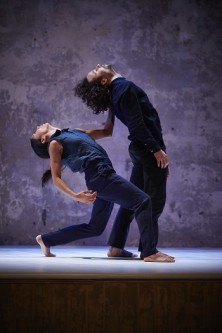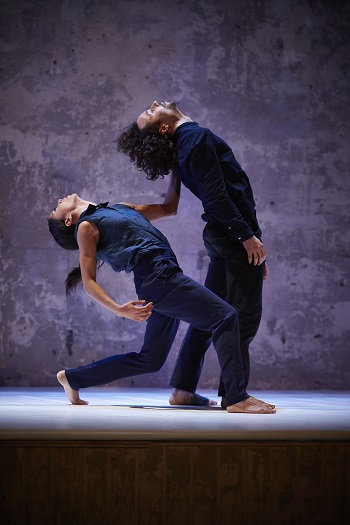 United Kingdom Wilton’s Strike! Dance Festival 2016: Wilton’s Music Hall, London, 3.5.2016. (J.O’D)
United Kingdom Wilton’s Strike! Dance Festival 2016: Wilton’s Music Hall, London, 3.5.2016. (J.O’D)

George Green’s School Performers: Georgia Brooks, Michael Drew, Josie Hodges, Marjhan Akther Hossain, Melissa Hudson, Alayssa Khatun, Waseem Kibria, Wagd Mohamed, Fatima Omar, Emily Parrt, Georgina Pooley, Bradley Sands, Armel Seri and Kieran Rice
The Reservoir
Choreography and Performers: Estela Merlos and Thomasin Gülgeç
Music: Oliver Coates
Virtue
Performer: Botis Seva
After the performance, but before the post-show discussion, one of the Wilton’s Strike! Dance Festival 2016 organisers stood up in front of the audience with a microphone in his hand. ‘Wow!’ he said about the ‘hip-hop theatre’ piece by freelance dance artist and choreographer Botis Seva that had just come to an end. He then called for a round of applause for all the ‘wonderful’ dance works that had been performed. I was thinking more along the lines of ‘good in parts’ or ‘puzzling’ myself.
The opening night of this free three-night festival of work from emerging choreographers started with a ‘curtain raiser’ by fourteen pupils from George Green’s School on the Isle of Dogs. The theme for the festival is ‘Memory’. The curtain raiser began with the recorded voices of children giving their often surprising responses to the word. Created in five, two-hour sessions, the dance that followed had some convincing performances, some shaky details, and a strong overall shape.
In the introductory film to the next piece, made by students from the BFI Film Academy, dancer and choreographer Thomasin Gülgeç spoke of Jean-Dominique Bauby’s book The Diving Bell and the Butterfly. The locked-in syndrome suffered by the author was inspiration for The Reservoir, a work choreographed and performed by Gülgeç and Estela Merlos.
Thomasin Gülgeç is a dancer whose feet make very sure contact with the floor. The agile movements of his arms and legs start at the still centre of his body. He is compelling to watch. Estela Merlos, alone at first on the upper tier, is somehow less so. She becomes more forceful as the piece develops, especially when she and Gülgeç dance together. Making no eye contact at all for a full eighteen minutes, they slot into each other’s extended arms and fold over each other at the waist. Gülgeç performs a backward roll from the front of the stage into the arched recess (twice). But the piece seems long in its middle section. And with so much movement by both dancers, the initial reference to locked-in syndrome is unclear.
During the interval that followed, Botis Seva himself emptied several waste baskets full of scrunched up paper over the lower part of the stage. He begins his piece seated to one side of it, hunched over a pen and notebook in his lap. What he does then is walk in a slow circle behind the audience to reach the stage on the other side. Dressed in white T-shirt, grey trousers and something like a black, aviator’s helmet with earphones, the dancer remains hunched over, with his back presented, for the next twenty minutes.
In the introductory film to this piece, a cheerful sounding Seva said the film Birdman was his inspiration. I have not seen the film, but presume that the bowed and tortured figure he presents in Virtue is a reference to it. Frantically scribbling on the notebook, stuffing the scrunched up paper into his mouth, thrashing about on the floor to the sound of film dialogue, Seva never once acknowledges the presence of an audience. The only thing that comes close to what could be called ‘dance’ is when he rises on to the very tips of his toes while balancing against a desk and chair on the stage’s upper tier.
Yet Seva’s body is controlled all the time, and the piece comes to a surprising climax. When the groaning dancer has sunk to the floor, images of circles and spirals begin to be projected onto the wall of the recess. They go from black-and-white to colour. The sound of a gurgling baby is heard. Indistinctly at first, the baby says ‘Daddy’. Sitting now on the chair on the upper tier, a strange figure in his aviator’s cap, Seva looks at the wall as the light fades. If I still can’t agree with the organiser’s ‘wonderful’, I can understand why he said ‘Wow!’.
John O’Dwyer
